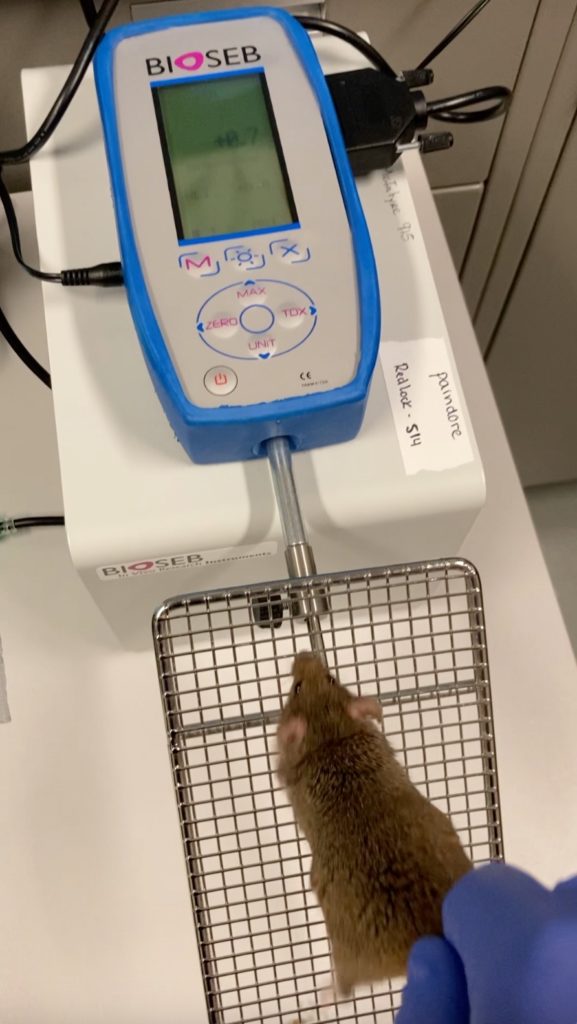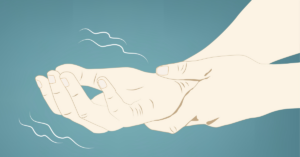Many daily tasks, such as writing or buttoning a shirt, require fine motor skills. One aspect of fine motor skills is muscle strength. In order to write, for example, you need to grip the pencil with the appropriate amount of force. Ataxia can involve a loss of control over fine motor skills, which may be caused in part by decreased muscle strength.
What is the grip strength test used for?
Scientists use the grip strength test to measure muscle strength in mice. The test works by measuring the maximum force of a mouse’s grip on a metal bar. With the grip strength test, scientists can monitor the progression of motor problems in mouse models of ataxia and test potential treatments. For example, if a mouse’s grip strength increases after treatment, then that treatment may be able to improve muscle strength.
How do you perform the grip strength test?
The grip strength test is relatively simple, involving a metal grid or bar attached to a device that measures force. To perform the grip strength test, the scientist suspends the mouse by its tail, which causes the mouse to instinctively grasp at the bar below. Then, the scientist gently pulls back on the mouse’s tail, and the device measures the force of the mouse’s grip on the bar. The grip strength test is usually repeated twice for a total of three trials per mouse.
What are the advantages and disadvantages of the grip strength test?
The grip strength test is easy to perform and relatively stress-free for the mouse. Importantly, the test allows the measurement of a subtle variable that is difficult to notice by eye. On the other hand, several factors can unintentionally influence the outcome of the test. For example, variability in the angle or force of the scientist’s pulling on the mouse’s tail can affect the measurements. To account for this, the grip strength test involves three trials per mouse that are averaged together, and the test is usually performed in combination with other tests of motor function.
Overall, the grip strength test is a relatively simple test used to measure muscle strength in mice. The test is useful for measuring how muscle strength changes during the course of disease or in response to treatment.
If you would like to learn more about the grip stength test, take a look at these resources by JOVE and Bioseb.

Snapshot Written by: Sarah Donofrio
Edited by: Dr. Larissa Nitschke

Snapshot: What is Tremor?
If you’ve ever felt shaky when speaking in public or after drinking too much coffee, then you’ve likely experienced tremor. Tremor is an involuntary, rhythmic shaking of parts of the Read More…


Snapshot: What is Dystonia?
Dystonia is a disorder that affects the way a person moves. Specifically, people with dystonia have involuntary muscle contractions, which can cause abnormal twisting postures. Dystonia can affect muscles anywhere Read More…


Snapshot: What Does Incomplete Penetrance Mean?
Incomplete penetrance is a characteristic of a wide range of genetic diseases, including hereditary forms of neurodegenerative disease, heart disease, and cancer. In short, it means that individuals carrying a Read More…









